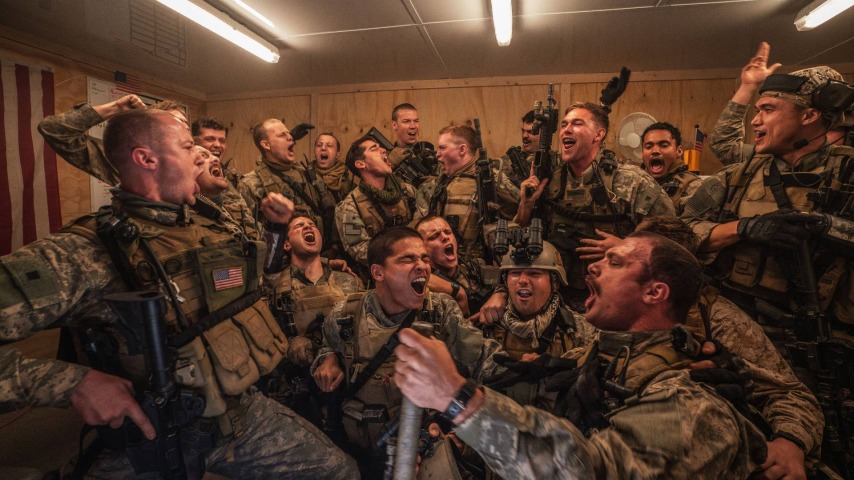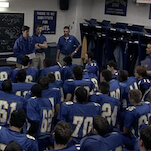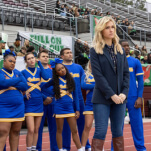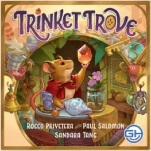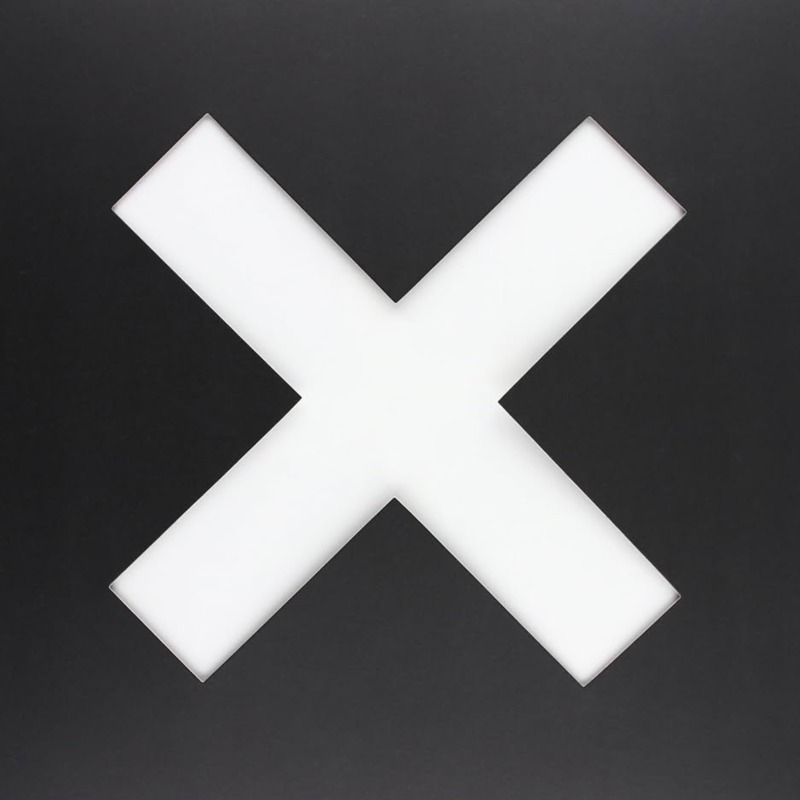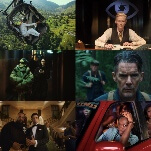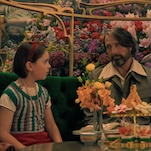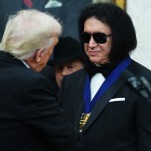Where Dye was the most visibly instrumental, though, was in updating the military-entertainment complex for a new generation, a legacy that Mendoza continues. Similar to Dye’s innovative actor boot camps, Mendoza put on a three-week program based on BUD/S (the notoriously intensive SEAL training) to get Warfare‘s rogues’ gallery of up-and-coming Hollywood actors—from familiar names like Will Poulter and Charles Melton to more recent TV breakouts like D’Pharaoh Woon-A-Tai and Cosmo Jarvis—ready to look and feel like real Tier 1 operators. There is a romanticism inherent to taking people that look like movie stars and making them move like idealized soldiers.
If Civil War was an ambivalent film about the conflict within images that purport to be anti-war while also requiring a certain, possibly dangerous, aesthetic appeal, then Warfare totally gives in to the fetishism of war imagery. One might point to Warfare‘s experimental, closed-in style, where the perspective of the conflict and the ultimate goal of its pain is left intentionally opaque so as to focus on the suffering of the soldiers and, in a momentary twist at the end of the picture, the invaded and devastated Iraqi people.
If that final statement is taken as what the film is actually trying to convey, one could extrapolate that Come And See—which Garland cited as one of the only true anti-war films during Civil War‘s press tour—is subversively a work of Soviet militarism. The final moments of that film feature a transition which is rarely talked about, where the camera runs through the woods and the summer suddenly turns into a snow-covered winter, with the partisans still running in formation. It implies a forever war which, when paired with the statistics of the genocide the Nazis were committing in Belarus, works polemically to justify the siege mentality of the state through its attempted annihilation by the fascists and later the capitalist West. Warfare’s choice to end on a moment of quietude in the devastated Ramadi streets is a rug pull that attempts to add perspective at the end of the story, yet it too is subverted by the credits revealing that the film is dedicated to one of the severely wounded real SEALs, Elliot Miller. There is a specter of guilty conscience, perhaps, but one overshadowed by a film that is ultimately a project by one soldier for another—men that went through hell together and made it out.
Warfare‘s credits pose the question, what did these men suffer for? This is a common quandary with the genre, and one easily co-opted by reactionaries. Abel Gance’s 1919 film J’accuse is traditionally thought of as a rebuke of the destruction wrought by the First World War. Its grand finale features the ghosts of dead soldiers returning home to find nothing but bourgeois decadence, showing that the men, in effect, died for an ungrateful society. This mentality was popular within burgeoning fascist movements at the same time, be they Arditi in Italy or disgraced Freikorps irregulars in Germany. Fascism, as a movement, came from the fallout of WWI, and it would be naive to read anything that criticized the conflict as being truly against war itself, as so many militarist movements developed in the wake of their nation’s “failures” and would lead to the most devastating war in the history of humanity.
Unlike most films of this type, there is little in Warfare to distract from its suffering, except perhaps its technical fetishism. The film is narratively sparse and tightly confined, emphasizing experience above all else. After the initial operation is a failure, two of the SEALs are severely wounded, writhing in dusty and bloodsoaked pain on the floor for the majority of the film’s runtime. Ostensibly, it is not a romantic look at its subject; there are no ridiculous kill counts or squibs exploding as American troops defy the odds. Instead, Garland and Mendoza try to strip the film of the genre’s impulse for glory. But what remains? Genuine camaraderie and a sense of overcoming the odds, as they do in the end—Poulter’s shellshocked character might let his squad down, only for Melton’s calm and collected soldier to recover the situation. The circumstances are, obviously, not desirable, but the characters within are models of masculinity, ones which can be seen as aspirational for the impressionable. In the odd press tour of the film (one that’s even been accused of queerbaiting), the stars have showed off their matching “call on me” tattoos—which are at once a reference to the film’s opening Eric Prydz needledrop, yet also call to mind a glamorized sense of military brotherhood.
It is an on-brand depiction for Mendoza, whose first IMDb credit as a military advisor was on the Navy-commissioned propaganda film Act Of Valor—a film which boasted self-sacrifice and had a main selling point being that it starred real Navy SEALs. From there, he’s gone on to work on two thinly veiled military ads from Peter Berg and Mark Wahlberg, Lone Survivor and Mile 22, as well as a film similarly claustrophobic and insular to Warfare, The Outpost, which was hailed for its visual innovations in portraying combat. Mendoza also worked on the 2019 Call Of Duty: Modern Warfare, a game in a series that first drew its “realism” from cinema. The series’ initial developers, Infinity Ward, were composed largely of a team that worked on the early Medal Of Honor games, which were projects produced by Spielberg with the intent of getting a new generation interested in the history of WWII.
But if games had earlier taken their cues from Saving Private Ryan’s Omaha Beach sequence, cinema now seems to be reappropriating its images from games. The denouement of Civil War pulls images placed in the collective unconscious by the original Call Of Duty: Modern Warfare 2 and its own assault on Washington. The recognizability of these images from one medium to another is a part of the immediate draw, similar to how the recognizability of star power puts butts in seats—if you know a star, or a franchise, or a superhero, or anything that looks like the thing you already know, it’s a strong pull in the age of content. Warfare is simply another step in the evolution of this kind of media, one co-authored by a man who has led the charge in innovating 21st-century American military propaganda for over a decade.These works are trapped, perhaps intentionally so—whether they glamorize or self-efface, they wind up functioning as ads for the military. Armed forces can sell themselves both ways, through a focus on victory or on the suffering ahead of it. Indeed, just as recruitment slogans like “Be All You Can Be” emphasize personal trials, a film like Warfare can show every way in which a situation could be so terrible that no person should want to find themselves in it, then render that point moot by presenting personal fulfillment in overcoming the odds.
What makes a film like Warfare seem so insidious compared to more blatant propaganda pieces like Lone Survivor or Call Of Duty is its credentials. It is not a first-person shooter, or a Mark Wahlberg vehicle. It’s an A24 movie, co-authored by an acclaimed and cerebral writer-director. In the trailer for Warfare, it is unnerving when the A24 logo transforms itself into “Iraq 2006,” as if the company is turning in its indie laurels for a seat at the DoD-backed table. It’s unnerving, too, how well Garland’s cool, floaty camerawork slips into the skin of a military movie. Gone are the shaky handhelds and messy film grains, in are the stabilized and hyper-clear digital images of the 21st century. It’s a new way to look at the chaos of war, or at least one that defies the conventions that immediately predate it. And despite these formal differences, or what a film is theoretically saying about war, there is one key constant which can always be used as a recruitment tool: showing soldiers’ valor. Warfare is no exception, beyond how deeply it tries to hide its interest in doing so.
